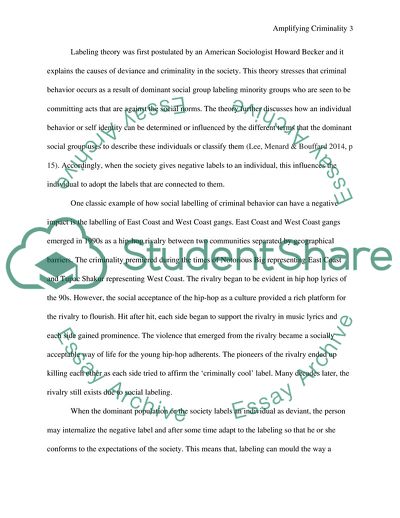Cite this document
(Amplifying Criminality Through Labelling Essay Example | Topics and Well Written Essays - 2750 words, n.d.)
Amplifying Criminality Through Labelling Essay Example | Topics and Well Written Essays - 2750 words. https://studentshare.org/sociology/1865452-apart-from-its-possible-effect-upon-self-concept-how-might-labelling-people-as-criminal-amplify-their-criminality
Amplifying Criminality Through Labelling Essay Example | Topics and Well Written Essays - 2750 words. https://studentshare.org/sociology/1865452-apart-from-its-possible-effect-upon-self-concept-how-might-labelling-people-as-criminal-amplify-their-criminality
(Amplifying Criminality Through Labelling Essay Example | Topics and Well Written Essays - 2750 Words)
Amplifying Criminality Through Labelling Essay Example | Topics and Well Written Essays - 2750 Words. https://studentshare.org/sociology/1865452-apart-from-its-possible-effect-upon-self-concept-how-might-labelling-people-as-criminal-amplify-their-criminality.
Amplifying Criminality Through Labelling Essay Example | Topics and Well Written Essays - 2750 Words. https://studentshare.org/sociology/1865452-apart-from-its-possible-effect-upon-self-concept-how-might-labelling-people-as-criminal-amplify-their-criminality.
“Amplifying Criminality Through Labelling Essay Example | Topics and Well Written Essays - 2750 Words”. https://studentshare.org/sociology/1865452-apart-from-its-possible-effect-upon-self-concept-how-might-labelling-people-as-criminal-amplify-their-criminality.


